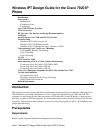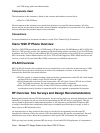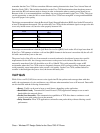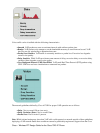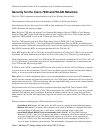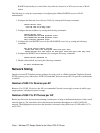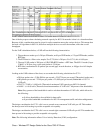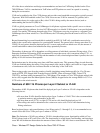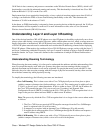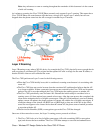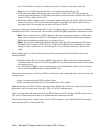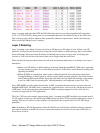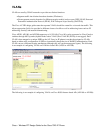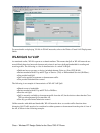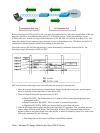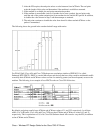30 AP limit is due to memory and processor constraints on the Wireless Domain Server (WDS), which is AP
functionality to provide this enhanced roaming and security. This functionality is introduced into Cisco IOS
Software Release 11.2(11)JA on the Cisco APs.
Deployments that do not require this functionality, or have a physical area that requires more than 30 APs of
coverage, can disable the WDS or Secure Fast Roaming functionality on the APs. This eliminates the
limitation of 30 APs in the subnet or VLAN.
In the future, as WDS functionality is migrated to faster processing devices within the network, the 30 AP per
subnet limitation will be expanded or removed. For more information on this, refer to Cisco Structured
Wireless Aware Network (SWAN) Overview.
Understanding Layer 2 and Layer 3 Roaming
One of the obvious benefits of WLAN IP phones over wired IP phones is the ability to physically move from
place to place while having a conversation. However, unlike cellular phone services, where coverage areas are
usually nationwide or international, WLAN IP phones have smaller coverage areas. In addition, administrators
of WLAN IP phone networks need to understand and consider their IP addressing schemes before deploying
WLAN IP phones. What needs to be considered is how WLAN IP phone coverage overlays with the Layer 2
and Layer 3 addressing within the IP network. An Layer 2 network is defined as being a single IP subnet and
broadcast domain. An Layer 3 network is defined as the combination of multiple IP subnets and broadcast
domains.
Understanding Roaming Terminology
When discussing the term roaming, it is often good to understand the audience and their understanding of the
term. For people that mostly work with voice systems, they often associate roaming with the concept of
physical movement and from where a call can be originated. For people that mostly work with 802.11 data
networks, they also often associate roaming with the concept of physical movement, but they often associate
this with data connectivity while physically moving.
To simplify the terminology, the following two terms are introduced:
Pre−Call Roaming This is when a user with a Cisco 7920 physically moves from place to place
(within a campus or between sites) before making a voice call. This roaming may be within an Layer
2 VLAN, or across Layer 3 subnet boundaries. If this is within an Layer 2 VLAN, the IP address on
the Cisco 7920 remains the same. If it is across an Layer 3 boundary, and Dynamic Host
Configuration Protocol (DHCP) is enabled on the Cisco 7920, the Cisco 7920 recognizes that it is no
longer in the previous subnet and uses DHCP to obtain a new IP address.
Note: The process by which the Cisco 7920 recognizes that it is no longer in the correct subnet works
as follows:
The Cisco 7920 does not received SCCP keepalive messages from the Cisco CallManager
that it is registered with (30 to 90 seconds).
1.
It attempts to re−register with an alternate Cisco CallManager (30 to 60 seconds).2.
It realizes that it cannot reach the Cisco CallManager through the IP address and requests a
new IP address using DHCP.
3.
•
Mid−Call Roaming This is when a user with a Cisco 7920 physically moves from place to place
(within a campus or between sites) while a voice call is active on the phone.
•
Cisco − Wireless IPT Design Guide for the Cisco 7920 IP Phone



